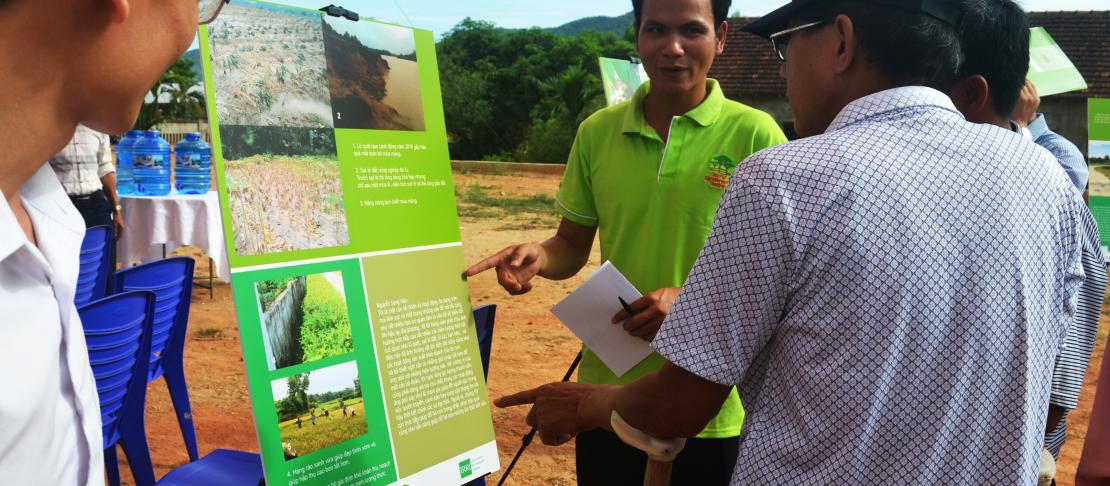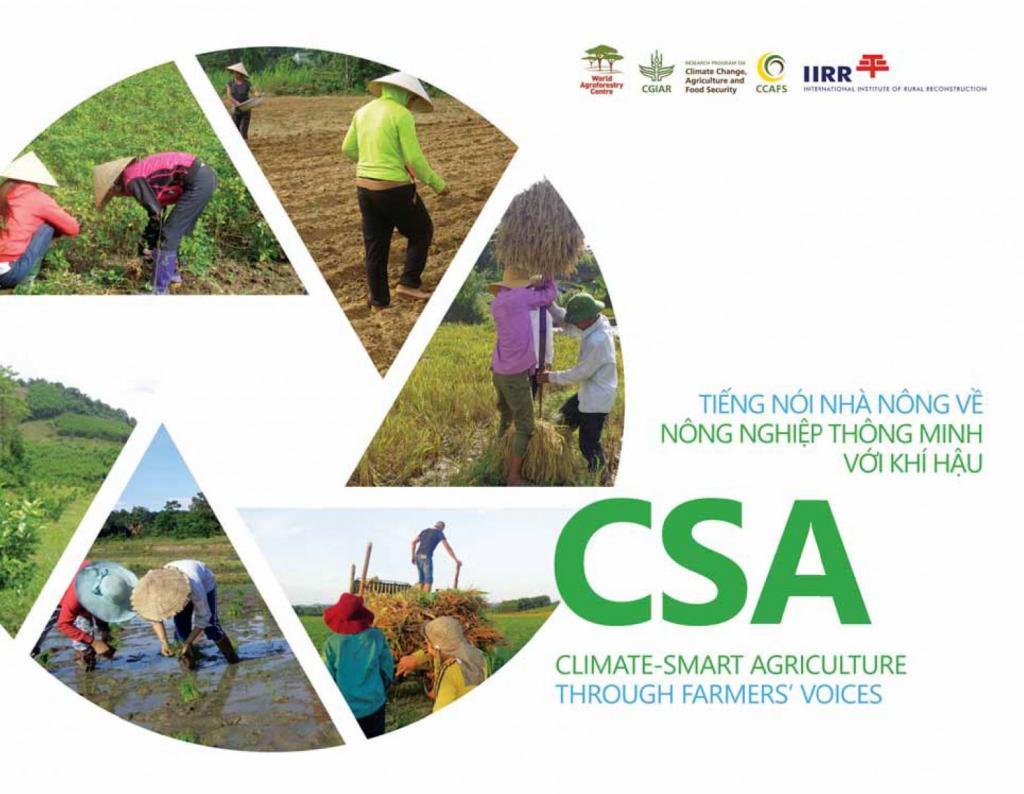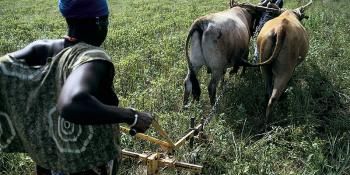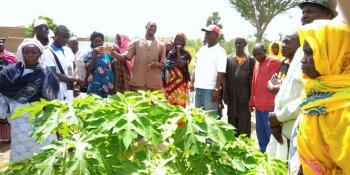Worth a thousand words: Using Photovoice to document the climate change experiences of farmers in Vietnam

A Photovoice book showcases farmers’ experiences of the impacts of climate change on agriculture, as well as their own adaptation strategies.
Photovoice is a participatory method that utilizes photography to share people’s experiences through photos and images. In the context of climate-smart agriculture (CSA), it can be used to document climate change-related issues as perceived by farmers. This documentation can then be used to enlighten policy makers and development organizations regarding the challenges that farmers face every day. Furthermore, photovoice can serve as a knowledge-sharing platform for farmers, enabling them to inform each other of effective climate change adaptation practices.
This project, implemented in My Loi Climate-Smart Village (CSV) in 2017, involved taking photos of farming methods used and challenges faced by farmers in the CSV. The farmers were also asked to take photos of the methods they have adopted to solve climate-related challenges. The photos taken were compiled in a book developed by the World Agroforestry Centre (ICRAF) Vietnam, with support from the CGIAR Research Program on Climate Change, Agriculture, and Food Security (CCAFS). Titled ‘Climate-Smart Agriculture through Farmers’ Voices’, the book was written in English and Vietnamese languages to cater to its target audiences.
Daily lives, daily struggles
The first set of photos bared the daily experiences of the farmers. Their activities include preparing the lands for the planting season, drying rice and corn under the sun, and reaping their crops during harvesting season. Through captions, the farmers indicated that they are highly dependent on favorable weather and climate to grow high quality crops.
Due to climate change manifested in extreme weather conditions and abnormal weather patterns, farmers are struggling to grow their crops. As a result, their income is affected. For instance, the negative effects of climate change were illustrated in a photo taken by a farmer from Son Trung 2 Village. The photo shows that unfavorable weather conditions cut peanut yield to three quintals from five quintals, which is supposed to return about VND 7.5 M.
“Living with the flood”
Aside from extreme weather conditions, the farmers identified a lack of resources as a primary factor affecting their farming. Hồ Văn Hoan from Son Trung 2 Village, for example, shared that only one tractor is available in the village. If the farmers wait their turn to use the tractor, the fields will eventually dry up and they will not be able to plant their crops.
Destructive human activities were identified as another primary factor. The farmers captured exploitation of land and natural resources, including illegal deforestation happening in some areas.
With heavy rainfalls and extreme heat aggravating their situation, farmers commonly experience floods, landslides, soil erosion, and droughts. These natural disasters destroy agricultural lands and can render residential areas almost uninhabitable. In a photo by Lê Thị Thanh from My Lac Village, a former rice field was turned into a rocky land area after the floods in 2015. Photos from Nguyễn Song Hào of My Lac Village and Nguyễn Thị Việt of My Loi Village showed crops that had failed due to extreme heat. With the annual occurrence of these natural disasters, another farmer, Phạm Huy Hoàng from My Loi Village, wrote in his photo caption that he had already accepted that he will be “living with the flood.”
Adapt, improvise, work together
The farmers are seen in the photos working together to adapt and survive the negative effects of climate change. The farmers have identified several adaptation measures, including:
- Planting alternative trees and crops
- Planting various kinds of plants and grasses
- Constructing drip irrigation systems, water pumps, and water ditches
- Building greenhouses
- Raising animals that better tolerate extreme weather conditions
- Utilizing information provided by local weather channels and crop calendars, and available on the Internet
Aside from these measures, the farmers have adopted environment-friendly practices such as installing biogas systems that use livestock manure, and using palm and gourd leaves as roofing alternatives. The manure serves as a natural fertilizer for plants as well. Because the manure is not simply dumped, the farmers are able to reduce the foul smell in their environment and save resources.
The photovoice project proves that climate change is wreaking havoc on the global environment and that agriculture is one of the most affected sectors. However, the project also showed the resilience and adaptive capacities of farmers amidst this struggle. The challenge now for development organizations, especially those focusing on agroforestry, climate change, and food security, is to empower the farmers by building and strengthening their capacities to adapt to climate change.
Download the book: Duong MT, Cleary J, Le TT, Carter A, Nguyen DT, Simelton E, Tran HM, Bernardo E, and Maggiore G. 2018. Climate-smart agriculture through farmers’ voice. Hanoi, Vietnam: World Agroforestry Centre.
Read more:
- Blog story: A good shot for scaling up climate-smart agriculture: Photovoice in My Loi
- Infographic: Steps in Conducting a Photovoice Project
- Posters: Photovoice in Climate-Smart Villages in Vietnam
Renz Louie Celeridad is the Junior Communications Specialist for the World Agroforestry Centre Philippines. He also works as a Communications Consultant for CCAFS SEA.




